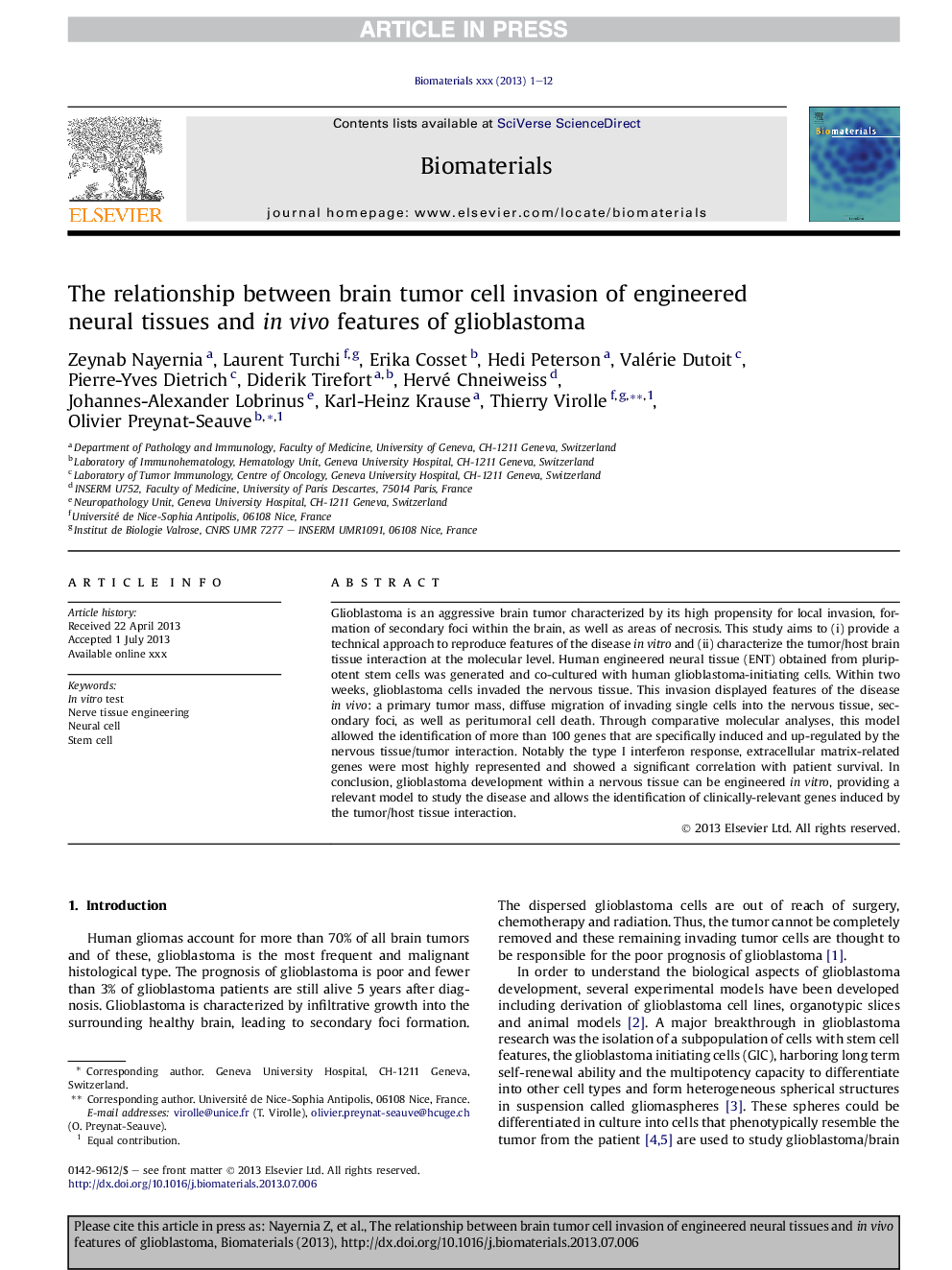| Article ID | Journal | Published Year | Pages | File Type |
|---|---|---|---|---|
| 10228510 | Biomaterials | 2013 | 12 Pages |
Abstract
Glioblastoma is an aggressive brain tumor characterized by its high propensity for local invasion, formation of secondary foci within the brain, as well as areas of necrosis. This study aims to (i) provide a technical approach to reproduce features of the disease in vitro and (ii) characterize the tumor/host brain tissue interaction at the molecular level. Human engineered neural tissue (ENT) obtained from pluripotent stem cells was generated and co-cultured with human glioblastoma-initiating cells. Within two weeks, glioblastoma cells invaded the nervous tissue. This invasion displayed features of the disease in vivo: a primary tumor mass, diffuse migration of invading single cells into the nervous tissue, secondary foci, as well as peritumoral cell death. Through comparative molecular analyses, this model allowed the identification of more than 100 genes that are specifically induced and up-regulated by the nervous tissue/tumor interaction. Notably the type I interferon response, extracellular matrix-related genes were most highly represented and showed a significant correlation with patient survival. In conclusion, glioblastoma development within a nervous tissue can be engineered in vitro, providing a relevant model to study the disease and allows the identification of clinically-relevant genes induced by the tumor/host tissue interaction.
Related Topics
Physical Sciences and Engineering
Chemical Engineering
Bioengineering
Authors
Zeynab Nayernia, Laurent Turchi, Erika Cosset, Hedi Peterson, Valérie Dutoit, Pierre-Yves Dietrich, Diderik Tirefort, Hervé Chneiweiss, Johannes-Alexander Lobrinus, Karl-Heinz Krause, Thierry Virolle, Olivier Preynat-Seauve,
